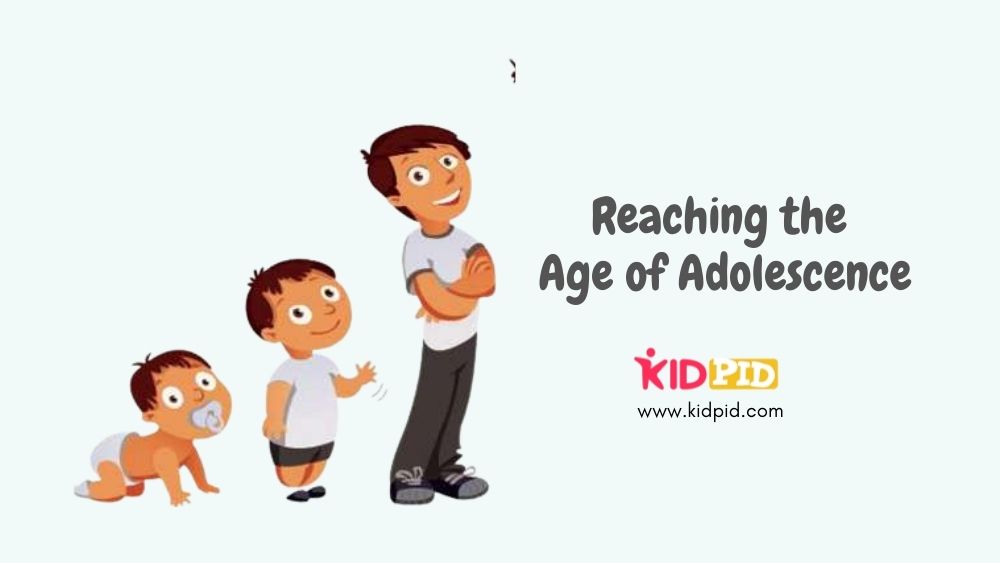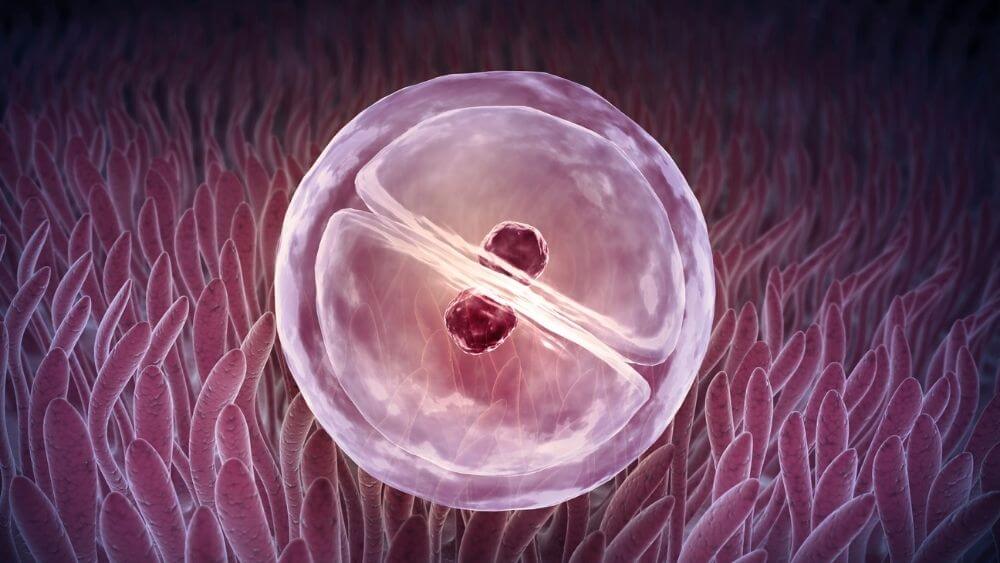Reaching the Age of Adolescence

Growing up is a natural part of life. One of the most distinct phases of growing up begins in girls and boys at the age of 10-12, although this age varies from person to person. This phase is known as adolescence.
The period of life, when the body undergoes a multitude of changes that result in reproductive maturity is known as adolescence.
Adolescence usually begins around the age of 10 and lasts till about 18. As these changes occur during the ‘teen’ years (thirteen, …., seventeen), adolescence is alo referred to as teenage.
The changes that occur in the body during this period mark the onset of puberty.
It is important to remember that the age of onset of puberty is different for everybody and the changes one goes through are not always the same for everybody.
Contents
Changes At Puberty:
Puberty is marked by several changes in the body, both internally and externally. Let’s learn about these changes.
Increase in Height
- Most conspicuous change that occurs at puberty is an increase in height
- The long bones of the arms and legs elongate making one taller
- All parts of the body do not grow at the same rate. Therefore, some body parts may feel out of proportion but with time they become proportionate.
- Increase in height may occur as a sudden spurt in some individuals while in others it takes place gradually over a longer period of time.
- Usually height increase begins earlier in girls but by the age of 18 both girls and boys reach their maximum height.
Change in Body Shape
- Boys begin to have broader shoulders and wider chests
- In case of girls, the region below the waist begins to increase in size
Voice change
- In boys, the voice box or larynx begins to enlarge at this age
- This enlarged larynx is visible as a bulge at the throat and is called the Adam’s apple
- As a result, boys’ voices become deeper.
- The muscles of the voice box can sometimes go out of control, making their voice hoarse. This state remains for a few days or a few weeks before going back to normal by itself.
- The voice box does not protrude in case of girls because it is smaller in size; their voice is comparatively high-pitched
Increased Activity of Sweat and Sebaceous Glands
- At this age, in both boys and girls, there is increased activity in the sweat and sebaceous glands resulting in increased production of sweat and oil respectively.
- Acne and pimples are very common and normal at this age due to the overactivity of these glands
Development of Sex Organs
- In boys, the testes and penis undergo development during puberty; the testes also produce sperm (the male gamete).
- In girls, the ovaries enlarge and the eggs (female gametes) begin to mature.
Mental, Intellectual and Emotional Maturity
- Adolescence is the age where people begin to change their way thinking
- Intellectual development occurs at this stage; this is often the stage at which one has the greatest capacity for learning
- At this age, a person becomes far more self-aware and self-conscious
- While going through so many physical changes, people begin to develop insecurities as well. It is important to remember that changes are a part of life and it’s normal to go through things that may or may not be common to everyone else.
What Are Secondary Sexual Characters?
During puberty, breasts begin to develop in girls and growth of facial hair begins in boys. These are features that help distinguish between males and females and are known as secondary sexual characters.
Hair also grows on the chest in case of boys and hair growth on the underarms and the pubic region is common for both boys and girls.
Hormones and Their Role in Puberty and Reproductive Function:
Hormones are chemical substances that are secreted by endocrine glands. Endocrine glands are ductless glands that release their secretions(hormones) directly into the bloodstream. In comparison, sweat glands and sebaceous glands release their secretions through ducts.
- Endocrine glands secrete hormones into the bloodstream which then acts on a specific body part or target site.
- The target site then responds to the hormone.
- Hormones produced by the pituitary gland is responsible for controlling secretion of sex hormones from the male and female reproductive organs; these hormones of the pituitary also cause maturation of ova in the ovaries and formation of sperm in the testes.
- The male hormone or testosterone is secreted by the testes at the onset of puberty and is responsible for the growth of facial hair.
- The female hormone or estrogen is secreted by the ovaries during puberty. It promotes the development of breasts and the development of milk secreting glands or mammary glands in the breast.
Reproductive Phase of Life:
Humans become capable of reproduction once ovaries and testes can produce gametes. The production and maturation of gametes last for much longer in males than in females.
Reproductive Phase in Females:
- Reproductive phase generally begins at about 10-12 years and lasts till about 45-50 years of age
- Maturation of ova begins at puberty.
- Every 28-30 days, a single mature ovum is released by one of the ovaries into the fallopian tube. At the same time the lining of the uterus becomes thick so that if the egg is fertilized, the uterus can receive and protect the fertilized egg.
- If fertilization does not take place, the mature egg is released from the body along with the lining of the uterus which includes tissues and blood vessels.
- This causes bleeding in women and is known as menstruation. It occurs every 28-30 days.
- The first menstrual flow occurs at puberty and is known as menarche. Initially the cycle may be irregular but with time it adjusts and becomes regular.
- The menstrual cycle usually stops at the age of 45- 50 and this stoppage is known as menopause.
What decides the sex of a baby?
During fertilization, a male and female gamete fuse together to produce a zygote which grows and develops into an embryo which ultimately develops into a baby. The sex of the baby depends on the male gametes.
- Genetic information is stored in the nucleus of cells in the form of thread like structures called chromosomes.
- Human cells have 23 pairs of chromosomes; one pair or two chromosomes out of these are sex chromosomes.
- Males have one X chromosome and one Y chromosome.
- Females have two X chromosomes.
- Gametes only have one set of chromosomes and hence they only have one sex chromosome.
- As human females have both X chromosomes, all female gametes or ova carry a single X chromosome
- As human males have both X and Y chromosomes, the male gametes or sperms are of two kinds – ones that carry X chromosome and ones that carry Y chromosome.
- Therefore, if a sperm carrying X chromosome fertilizes an egg, the zygote will be XX and hence a girl whereas if a sperm carrying Y chromosome fertlizes an egg, the zygote will be XY and will be a boy.
Hormones Other Than Sex Hormones:
Hormones are also secreted by endocrine glands such as thyroid, adrenal gland and pancreas.
- Thyroid secretes the hormone thyroxine which is vital for digestion, heart and muscle function and mental development. Goitre is a disease in which the thyroid gland cannot produce thyroxine.
- Adrenal gland secretes the hormone adrenaline. This hormone helps the body adjust when one is angry, worried or stressed.
- Pancreas secretes insulin, a hormone essential for controlling the level of blood sugar. Insufficient insulin secretion causes diabetes.
- Pituitary gland secretes growth hormones necessary for the normal growth of the body.
Importance of Hormones in Insects:
We already know that metamorphosis occurs in insects. Metamorphosis in insects is controlled by insect hormones.
We know that frogs also show metamorphosis.
Let’s take a look at their life cycle again.
Egg —> Tadpole(larva) —> Frog
This metamorphosis is controlled by the thyroxine hormone produced by the thyroid gland. As thyroxine production required iodine, iodine must be present in the water inhabited by frogs.
Maintenance of Reproductive Health:
During puberty, the body is going through changes and growing and therefore it is crucial to provide the body essential nutrients and maintain good personal hygiene and practice regular exercise in order to stay as healthy as possible.
Nutrition
A balanced diet consisting of carbohydrates, proteins, fats and vitamins in the correct proportions is necessary for growth. It is particularly important to maintain a good diet at this age because the body is growing very rapidly.
Hygiene:
A good sense of hygiene is important at this age because the overactivity of the sweat and oil glands can cause body odour. All parts of the body must be cleaned thoroughly on a daily basis in order to prevent bacterial infections. During menstruation, sanitary napkins should be used and changed every 4-5 hours in order to maintain good hygiene.
Physical Exercise:
Outdoor sports and activities are a good way to get physical exercise and remain fit and healthy.
Drug Abuse
Drug abuse is something that is very common among adolescents.
- It is important to remember that drugs are unhealthy for the body.
- Moreover, they have addictive properties and sustained drug abuse can have lifelong repercussions.
- Incurable diseases such as AIDS can occur through sharing of contaminated needles.
Summary:
- Adolescence
- Puberty
- Changes during puberty
- Secondary sex characters
- Role of hormones during puberty
- Reproductive phase of life
- Menstruation, menarche and menopause
- Sex determination of a baby
- Hormones in insects
- Maintenance of reproductive health






Responses